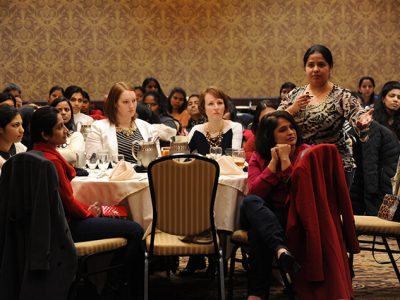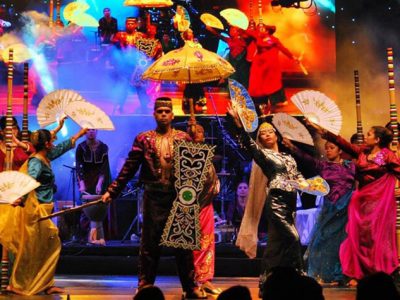 According to the 2016 Census, more than 50% of people in Canada have other origins than British Isles and French ones. This means that new immigrants can count on the support of their ethnic community or diaspora in this country.
According to the 2016 Census, more than 50% of people in Canada have other origins than British Isles and French ones. This means that new immigrants can count on the support of their ethnic community or diaspora in this country.
There are people of over 250 ethnic origins in Canada. Apart from British Isles and French origins of the first settlers in Canada and their descendants, Chinese, Italian, East Indian, Polish, and Filipino ancestries are among the 20 most common ones.
Chinese Community
The Chinese community is one of Canada’s largest ethnic groups. According to Statistics Canada, there are 1.4 million Chinese people in the country and 330K of those with a partial Chinese ancestry (almost 1.8 million in total).
The share of the Chinese is the largest in British Columbia (11% of the province’s total population or 540K people). Most Chinese (in terms of absolute numbers) live in Ontario (849K people, 6% of the population). Also, the significant share of people with Chinese ancestry live in Alberta (4%, 188K). Canadian cities with large Chinese populations are Vancouver (18% of the total population), Toronto (almost 10%), and Calgary (6%). By the way, Vancouver’s Chinatown is one of the largest in North America. There are also Chinatowns in Calgary, Montreal, Ottawa, Toronto, and in some smaller towns.
First Chinese in Canada were Macau carpenters who came to Canada in the 18th century. In the 19th century and in the early 20th century, there was an influx of Chinese railroad workers who settled in Chinatowns in large Canadian cities. Many Chinese arrived in Canada during the Second World War as refugees. Starting in the late 20th century, Chinese-Canadians have become active in the cultural scene in Canada.
Nowadays, Chinese people still immigrate to Canada en masse. China was the third most common place of birth (after the Philippines and India) of immigrants who arrived in Canada between 2011 and 2016. During these years, the number of new immigrants reached almost 130K. Many Chinese immigrate to Canada by creating or purchasing a business in the country.
Italian Community
There are 695K Italians in Canada and 892K people of Italian origin (1.6 million in total). Most of them live in Ontario (7% of the population or 932K people), Quebec (4%, 327K), and British Columbia (3%, 166K).
Canadian cities with the largest share of Italians include the following locations in Ontario: Sault Ste. Marie (21% of the population), Thunder Bay (14%), Niagara Region (12%), Hamilton (11%), and Windsor (10%). The most significant concentrations (in terms of absolute numbers) are in Toronto (484K Italians), in Montreal (280K), and in Vancouver (88K).
There are also Italian districts in many Canadian large cities: Little Italy in Edmonton, Little Italy and Saint-Michel in Montreal, Little Italy in Ottawa, Corso Italia — St. Clair Avenue West and Palmerston — Little Italy in Toronto, Little Italy in Vancouver, and Little Italy in Winnipeg.
A substantial influx of Italians in Canada began in the early 20th century. Those were largely peasants from rural southern Italy and agrarian parts of the north-east. A second wave occurred after the Second World War. Nowadays, the Italian community in Canada is one of the largest outside of Italy. Since 2010, the month of June is officially celebrated as Italian Heritage Month — a time to recognize and celebrate the Italian community in Canada.
East Indian Community
People of East Indian origin include those from India, Pakistan, Bangladesh, and Sri Lanka, as well as Indians from East Africa. Canadians of East Indian origin make up the second largest non-European ethnic group in Canada. There are 1 million East Indians and 278K people of East Indian ancestry (1.4 million in total). A substantial majority of the East Indian population living in Canada is born outside the country.
East Indians live predominantly in British Columbia (6% of the population, 309K people), Ontario (5%, 774K), and Alberta (4%, 174K). The large majority of them live in Toronto in Vancouver. Many of them also prefer to settle in Calgary, Edmonton, Ottawa, and Winnipeg. Canadian cities with large Indo-Canadian populations include Abbotsford in British Columbia (19% of the population), Toronto (10%), Vancouver (10%), and Calgary (6%).
In the Toronto area, most Indo-Canadians live in Brampton, Markham, Scarborough, Etobicoke, and Mississauga. In the Vancouver area, they choose to settle in Surrey, Burnaby, Richmond, Abbotsford, and Delta.
According to Statistics Canada, Canadians of East Indian origin are much more likely than the rest of the population to have a university degree (especially a postgraduate degree in mathematics, physics or computer science) and be employed in scientific and technical occupations.
The Indo-Canadian community started around the late 19th century in British Columbia. In the early 20th century, there was a spike in migration into this province. Most of the migrants were Punjabi Sikhs. There were also large numbers of Punjabi Hindus and Muslims. Nowadays, Indian people still immigrate to Canada on a massive scale. India was the second most common place of birth (after the Philippines) of immigrants who arrived in Canada between 2011 and 2016. During these years, their number reached almost 150K.
Polish Community
There are 264K Poles in Canada and 842K people with a partial Polish ancestry (1.1 million in total).
Polish Canadians live mainly in Saskatchewan (5% of the population or 60K people), Alberta (4%, 186K), and British Columbia (3%, 150K). Largest Polish Canadian communities are in Alberta (Calgary, Edmonton), British Columbia (Surrey, Vancouver, Victoria), Manitoba (Winnipeg), Nova Scotia (Cape Breton, Dartmouth, Halifax), Ontario (Hamilton, London, Mississauga, Ottawa, Thunder Bay, Toronto (Roncesvalles), Wilno), and Quebec (Montreal, Rouyn-Noranda).
One of the most famous Polish neighborhoods is Roncesvalles in Toronto that is filled with Polish establishments such as Café Polonez, where you can get borscht and pierogi, and is famous for its Roncesvalles Polish Festival which is held once a year.
First Polish immigrants started arriving in Canada in the 18th century. There were several waves of Polish immigration starting from the mid-19th century to this day.
Filipino Community
Filipino Canadians are the third largest group of the expat Filipinos and one of the fastest growing ethnic groups in Canada. There are 651K Filipino Canadians and 186K people with partially Filipino ancestry (837K in total) in the country.
The largest shares of Filipino Canadians live in Manitoba (6% of the population, 83K people), Alberta (4%, 175K), British Columbia (3%, 158K). The top destination for Filipino immigrants during the period from 2011 to 2016 was Alberta. Cities with most Filipino population are Toronto (5% of the population, 275K), Vancouver (5%, 134K), and Winnipeg (10%, 77K). There is a significant presence of Filipinos in other Canadian cities as well.
Because of their English proficiency and relatively high level of education, Filipinos tend to integrate into urban communities and are often actively involved with their communities rather than forming ethnic enclaves. However, there are city neighbourhoods with a significant number of Filipino Canadians, e. g. Clanton Park, Briar Hill — Belgravia, and Englemount — Lawrence neighborhoods in Toronto.
The first Filipinos migrated to Canada in the 1930s. During the 1980s, Canada saw an influx of Filipino contract workers, many of whom were working as live-in caregivers. During the period from 2011 to 2016, the Philippines was Canada’s leading source of immigrants (almost 190K people within 6 years).
Photo: Philcas.ca
Services and Support
As a rule, new immigrants come to large cities. In every major city in Canada, there are various religious organizations, churches, and cultural centres where you can get informational assistance, talk to other immigrants, and make connections.
There are also online forums for Canadia immigrants from different countries where you can get an answer to almost any question related to relocation, paperwork, job search, schools for children, etc. Keeping in touch with your native culture is possible thanks to cultural centres that organize various events and meetings. Local newspapers in different languages are also published in the major cities of Canada, where you can find information about how and where to buy basic necessities, get a job, and find an apartment or a house to rent or buy. Informal meetings of immigrants in Canada often take place in churches or mosques. More serious problems can be solved at an embassy or consulate.
Immigrants from different countries who do not have relatives or friends in Canada can get a letter of support from one of the immigrant organizations and associations, including religious organizations, as well as imams or priests. A support letter from a Canadian permanent resident, citizen or organization can add 150 points in the Express Entry system and help obtain permanent residence in Canada.
To apply for a letter of support, you usually need to meet the following requirements:
- Not to have ties (acquaintances, relatives, studies or a job) to other provinces than the one where you apply for permanent residency
- Have an in-demand occupation in the local labour market
- Have work experience
- Have a diploma or degree
- Have proficiency in English or French
The requirements may be different depending on a specific organization.
Diasporas’ Organizations in Canada
Newly arrived immigrants can get help or information support in one of the organizations within their communities.
Chinese Organizations
Association of Chinese Canadian Entrepreneurs (site: www.acce.ca): assists Chinese Canadians in developing new businesses, provides a network to share resources, organizes seminars, workshops, and conferences, facilitates communication between government and new businesses.
Chinese Canadian National Council: conducts activities in the areas of public education, systemic advocacy, community development, and coalition building; includes two branches: Toronto Chapter (site: www.ccnctoronto.ca) and London Chapter (site: www.londonccnc.com).
Canada China Business Council (site: ccbc.com): provides knowledge and connections to Chinese businessmen helping them to succeed in Canada, deals with issues affecting Canada-China business, trade, and investment.
Young Chinese Professionals Association (site: ycpa.ca): unites young Asian professionals and entrepreneurs, create opportunities to connect, train and equip them.
Chinese Cultural Centre of Greater Toronto (site: www.cccgt.org): organizes cultural events and tournaments in Toronto, offers cultural and educational programs.
Chinese Cultural Centre of Greater Vancouver (site: www.cccvan.com): holds cultural events and tournaments in Vancouver, offers cultural and educational programs.
Italian Organizations
Canadian Italian Business and Professional Association (site: www.cibpa.com): represents Italian Canadian businesses and professional community across Canada, protects the rights and interests of Canadians of Italian heritage.
Casa d’Italia (site: www.casaditalia.org): an Italian community centre in Montreal; honours the history of Montreal’s Italian community and supports the Italian community.
Centre Leonardo da Vinci (site: cldv.ca): a community centre in Quebec; provides gym facilities, skilled coaches, language courses, organizes cultural activities.
Italian-Canadian Community Services of Quebec (site: fcciq.com): supports the local health care system and social services, the Italian culture and language, provides services in Italian, helps Italian immigrants to integrate.
Italian Cultural Centre of Vancouver (site: italianculturalcentre.ca): promotes the Italian culture, values, and heritage in Vancouver, provides catering and banqueting facilities, language classes, organizes cultural activities.
National Congress of Italian-Canadians (site: italcongresso.qc.ca): protects the interests and reputation of the Italian community in Quebec, promotes the Italian culture and language.
Polish Organizations
Association of Polish Engineers in Canada (site: www.polisheng.ca): provides members with a platform for cooperation, exchange of knowledge and views, creative activities on professional, cultural and social matters, helps with adaptation to Canadian engineering marketplace, job search, integration into Canadian engineering and cultural environment.
Canadian Polish Congress (site: www.kpk.org): represents Polish Canadians interests before the Government of Canada, promotes the Polish culture.
Canadian Polish Millennium Fund (site: www.millenniumfund.ca): promotes the Polish culture in Canada and the Polish language, supports Polish schools, libraries, and other Polish organizations in Canada.
Polish Alliance of Canada (site: www.polishalliance.ca): organizes cultural events and meetings, has branches in 13 Ontario locations including Hamilton, Mississauga, Toronto, and others.
Polish Canadians Network (site: polishcanadians.ca): a communication and information hub for Poles in different cities across Canada.
Filipino Organizations
Filipino-Canadian Association of Quebec (site: ffcaq.com): provides the Filipino community in Quebec with cultural and social activities, programs, and services, assists new immigrants wishing to integrate into Canadian society.
Filipino-Canadian Association of Saskatoon (site: filcas.ca): promotes the Filipino culture, organizes cultural events, has connections with other Filipino Canadian organizations.
Filipino Workers Network (site: filipinoworkers.org): builds a network of union activists in the Greater Toronto Area to enable Filipino workers to support each other.
Philippine Cultural Arts Society of BC (site: philcas.ca): promotes the Filipino culture in British Columbia.
Philippine Centre Canada (site: pcc-ottawa.ca): supports Filipino-Canadians in becoming an integral part of Canadian society by providing cultural and social programs and services.


